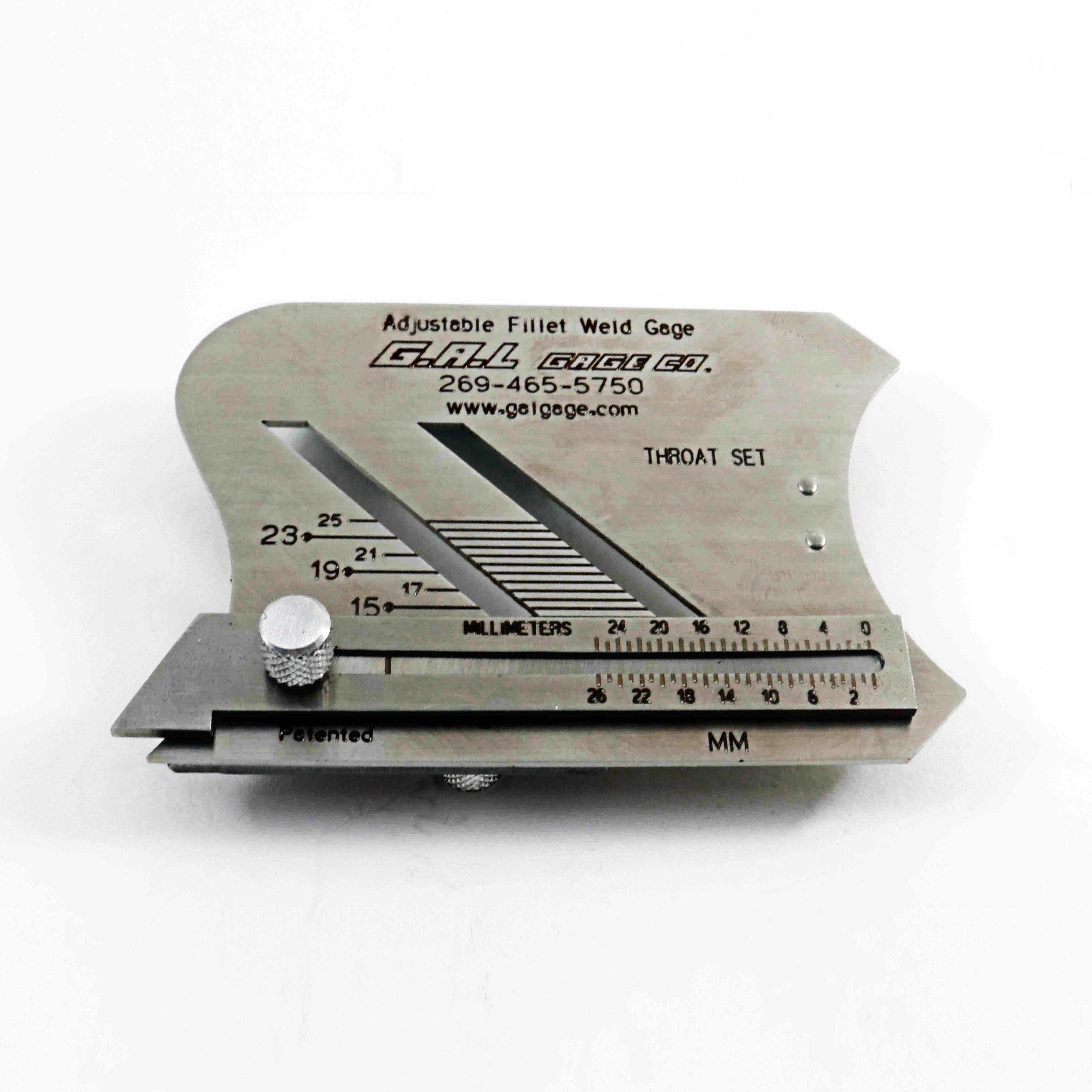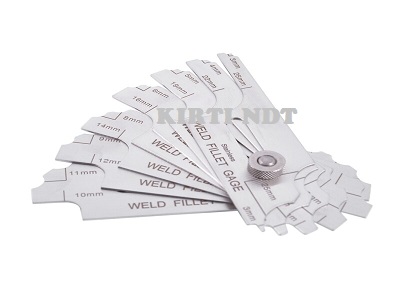Comprehending Gauge Fillet Weld: A Comprehensive Overview for Welders
Comprehending Gauge Fillet Weld: A Comprehensive Overview for Welders
Blog Article
Cutting-edge Methods to Fillet Weld Assessment and Screening: Enhancing Weld High Quality and Compliance Standards
In the world of welding, the quality and honesty of fillet welds play an essential function in making sure the structural strength and integrity of various industrial parts. With the continuous drive for enhanced efficiency and compliance with rigorous criteria, the exploration of innovative strategies to fillet weld inspection and screening has actually become necessary.
Advanced Non-Destructive Testing Techniques
Utilizing state-of-the-art modern technologies, advanced non-destructive screening methods play an essential role in guaranteeing the integrity and quality of fillet welds. These techniques, such as phased selection ultrasonic testing (PAUT) and magnetic particle testing (MPT), offer comprehensive understandings right into the weld's interior structure without causing any type of damage to the material. PAUT, for example, uses several ultrasonic components to inspect the weld from numerous angles, providing a thorough visualization of possible defects like absence of blend or splits.
Similarly, MPT works in detecting surface-breaking defects by applying an electromagnetic field and iron fragments to the weld location. This method is especially valuable for identifying discontinuities that may jeopardize the weld's strength. By using these sophisticated non-destructive screening techniques, weld inspectors can properly examine the top quality of fillet welds, ensuring conformity with sector standards and policies. The capacity to spot imperfections early on not only improves weld quality yet likewise protects against expensive rework or failings in architectural honesty, underscoring the importance of these cutting-edge screening methods in welding examinations.
Robotics and Automation in Evaluation

The integration of robotics and automation has revolutionized the examination procedure for fillet welds, enhancing efficiency and accuracy in top quality evaluation. Robotics supply exact control and repeatability in checking welds, making certain trusted and consistent outcomes. Automated systems can be programmed to adhere to certain evaluation courses, ensuring detailed insurance coverage of welds and reducing the danger of human mistake.
Robotic assessment systems equipped with advanced sensing units can detect and determine weld features with high accuracy, supplying thorough data for analysis. These systems can recognize problems such as splits, absence of combination, and porosity, enabling prompt rehabilitative actions to be taken. In addition, robotics and automation enable real-time information collection and analysis, providing prompt comments to operators and promoting fast decision-making processes.
In addition, the use of robotics and automation in fillet weld examination boosts general efficiency by decreasing inspection times and enhancing evaluation throughput. By streamlining the inspection process, suppliers can make sure weld top quality and conformity standards are fulfilled efficiently, eventually leading to cost financial savings and improved item high quality.
Making Use Of Artificial Knowledge for Evaluation
Expert system plays a pivotal duty in improving the efficiency and precision of evaluation in fillet weld evaluation procedures. By taking advantage of the power of AI, inspectors can enhance the evaluation of weld quality and compliance criteria, causing more exact and reputable results. AI formulas can rapidly process huge quantities of information from weld examinations, spotting flaws or variances that might be testing to determine with the naked eye. This advanced technology makes it possible for real-time surveillance of weld high quality, permitting immediate restorative actions to be taken if any type of problems are detected.
Furthermore, AI systems can gain from previous inspection data, continuously boosting their capacity to determine potential defects and variances in fillet welds. This flexible knowing ability improves the general quality assurance procedure, reducing the possibility of human mistake and guaranteeing that welds satisfy the called for standards. By integrating man-made knowledge right into fillet weld analysis, industries can achieve greater degrees of effectiveness, uniformity, and compliance in their assessment techniques.
Portable Tools for On-Site Assessment
Enhancing area inspection efficiency, the adoption of portable tools reinvents on-site analysis processes for fillet welds. These tools use adaptability and convenience, allowing inspectors to conduct complete exams in various locations, consisting of challenging or remote atmospheres. Portable devices such as ultrasonic screening gadgets, magnetic bit assessment tools, and electronic radiography systems supply real-time information and high-resolution imaging abilities, making it possible for fast decision-making and prompt comments on weld top quality.
One substantial benefit of portable tools is their ability to simplify examination treatments, lowering downtime and boosting general efficiency - Gauge Fillet Weld. Examiners can easily transport these tools to various task sites, removing the demand for delivering heavy machinery or parts to off-site centers. Additionally, the transportability of these devices promotes cost-effectiveness by decreasing transport costs and accelerating examination timelines
Additionally, making use of portable tools for on-site inspection advertises positive quality control actions, as examiners can promptly recognize and attend to any possible welding defects or discrepancies. By including these ingenious technologies right into on-site assessment practices, welding experts can guarantee conformity with market criteria and improve weld quality, inevitably leading to improved architectural honesty and safety in numerous welding applications.
Integration of Data Management Solution

Having actually optimized on-site assessment processes through the application of mobile tools, the following phase entails the smooth combination of data administration systems to further improve efficiency and information evaluation capabilities in fillet weld examination and testing. By incorporating information monitoring systems right into the evaluation procedure, organizations can streamline information collection, storage space, and analysis. This integration permits real-time monitoring of weld quality, prompt recognition of issues, and timely decision-making to rectify any issues that might emerge during the evaluation process.
The assimilation of data administration systems enables seamless communication in between various stakeholders included in the inspection process, promoting cooperation and enhancing general top quality control steps. Eventually, the assimilation of data management systems offers to boost the standards of fillet weld evaluation and screening, making certain compliance with industry policies and improving weld top quality.
Verdict
In conclusion, innovative techniques to fillet weld examination and screening have actually considerably improved weld high quality pop over here and conformity criteria. Advanced non-destructive screening approaches, robotics, automation, expert system, mobile tools, and data try these out administration systems have reinvented the method weld assessments are performed. By utilizing these technologies, industries can ensure that welds meet the called for top quality criteria and laws, inevitably enhancing general effectiveness and security in welding processes.

Having maximized on-site assessment processes via the application of portable devices, the following phase entails the seamless assimilation of information management systems to further boost efficiency and information analysis capacities in fillet weld see it here assessment and testing. Inevitably, the combination of information administration systems offers to raise the standards of fillet weld assessment and testing, making sure compliance with sector regulations and boosting weld quality.

Report this page